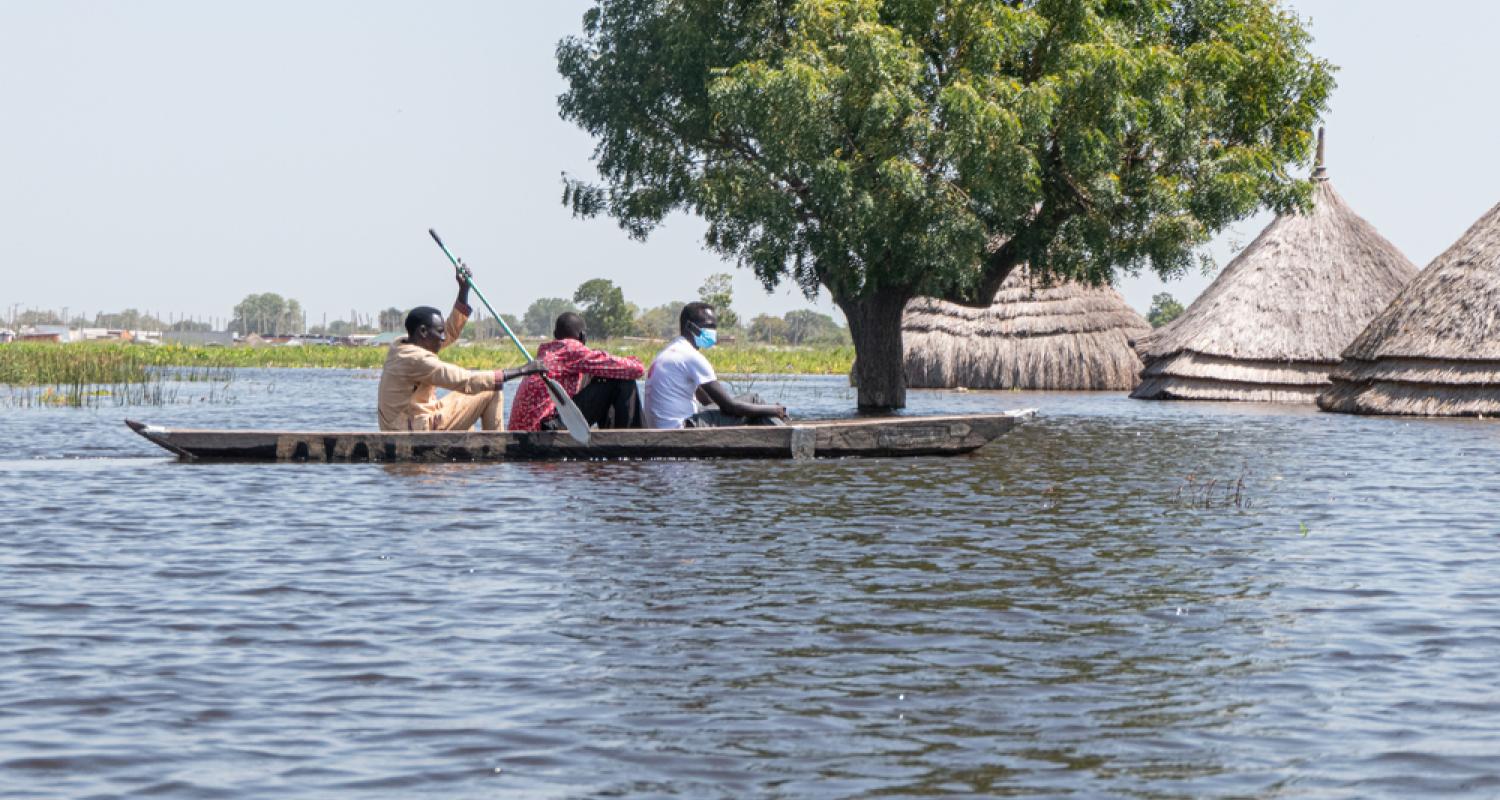In the Asia Pacific region, we are used to hot and humid summers followed by wet seasons marked by rain and wind. But recent years have shown drastic changes. In 2024, heat waves have hit Southeast Asia, and the rainy season that follows is expected to be much wetter, due to the La Niña phenomenon.
What is La Niña?
El Niño and La Niña are the warm and cool phases of a recurring climate pattern across the tropical Pacific—the El Niño-Southern Oscillation, or “ENSO” for short. The pattern shifts irregularly, bringing predictable changes in ocean surface temperature and affecting wind and rainfall patterns. These changes affect weather all over the world.

Typhoon Rai hit the Philippines in December 2021. © Chenery Lim/MSF
Both events start in the Pacific Ocean, but they are opposites in many ways. La Niña causes water in the eastern Pacific to be colder than usual. In the same region, El Niño can cause the water to be warmer than usual. So, areas that are hit with drought during La Niña years can get lots of rain in El Niño years.
In a La Niña year, the winds above the Pacific Ocean are much, much stronger than usual. The winds are so strong during a La Niña that they push lots of warm ocean water west toward Indonesia and the Philippines. And that means that lots of cold water rises to the surface near South America.
What happens during a La Niña year?
Though rainfall and floods are nothing unusual for the Asia Pacific region, La Nina brings greater rainfall than normal, which can trigger floods and landslides in many countries.
La Niña is characterized by lower-than-normal air pressure over the western Pacific. These low-pressure zones contribute to increased rainfall. Rainfall associated with the summer monsoon in Southeast Asia tends to be greater than normal, especially in northwest India and Bangladesh.

Above: Remote communities are even harder to reach after Cyclone Mocha. Myanmar, 2023. © MSF
Strong La Niña events are associated with catastrophic floods. The 2010 La Niña event correlates with one of the worst floods in the history of Queensland, Australia. (source: National Geographic)
In the Philippines, the Philippine Atmospheric, Geophysical and Astronomical Services Administration (PAGASA) has warned of above-normal rainfall conditions that may bring adverse impacts such as floods and landslides.

Above: Huts submerged in rainwater at a village near Khipro, Sanghar, Sindh province. Pakistan, November 2022. © Asim Hafeez for MSF
With increased rainfall and worsening floods come higher risks of various health problems, such as diarrhea, malaria, dengue, and more.
- Be safe from floods
Do you reside in a flood-prone location?
- In certain places, flash floods can happen with or without the usual warning signs of rain clouds or heavy rain. Find out of there is a possibility of flash flooding in your area. Move right away to higher ground if a flash flood is possible. DO NOT wait for commands before moving.
- Watch out for streams, drainage canals, and other sites that are prone to unexpected flooding.
- Wear sturdy shoes to avoid cuts or other injuries on the feet.
- Do not cross any moving water. Even six inches of swiftly moving water can bring down a person. If you must go across water, cross it where it is not moving. Check the stability of the ground in front of you with a stick. Remember: Flood water can also lead to the spread of infectious diseases like leptospirosis, or poisons from chemical hazards.
- Do not drive into flooded areas. A small car can be swept away in as little as one foot of water.
- Be safe during a storm
A tropical storm, cyclone or typhoon can bring heavy rains and strong winds, which can be dangerous and can cause injury in different ways. Many injuries are caused by falling or flying objects (such as TVs, lamps, glass, or bookcases), or by being knocked to the ground.
- If you are indoors: During a storm, move away from glass, hanging objects, bookcases, wall cabinets, or other large furniture that could fall. Watch for falling objects such as light fixtures, wall hangings, high shelves, and cabinets with doors that could swing open.
- If you are outside: Watch for hazards created by the earthquake, such as cracks in the pavement, fallen utility poles and wires, rising water levels, fallen overpasses, collapsed bridges or landslides.
- If you need to drive anywhere, watch out as roads, bridges and tunnels may have suffered serious damage. There are also risks of landslides and mudslides.
- Prepare an emergency kit

How can you be safe?
Heavy rains, strong winds and floods are expected every rainy season. What can you do to be safe?
Climate change threatens public health, especially vulnerable groups. Our teams help those affected. Support our mission.
